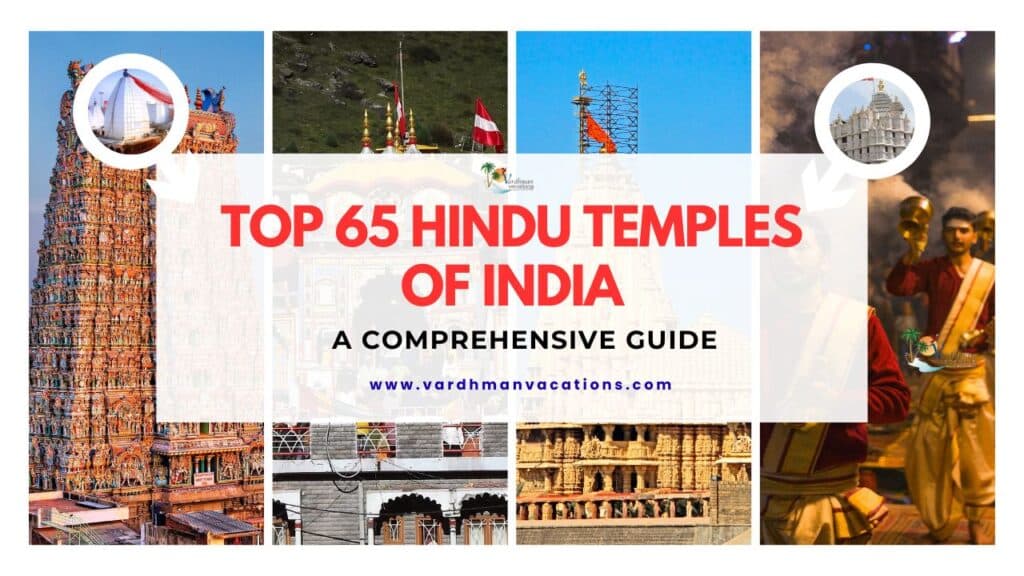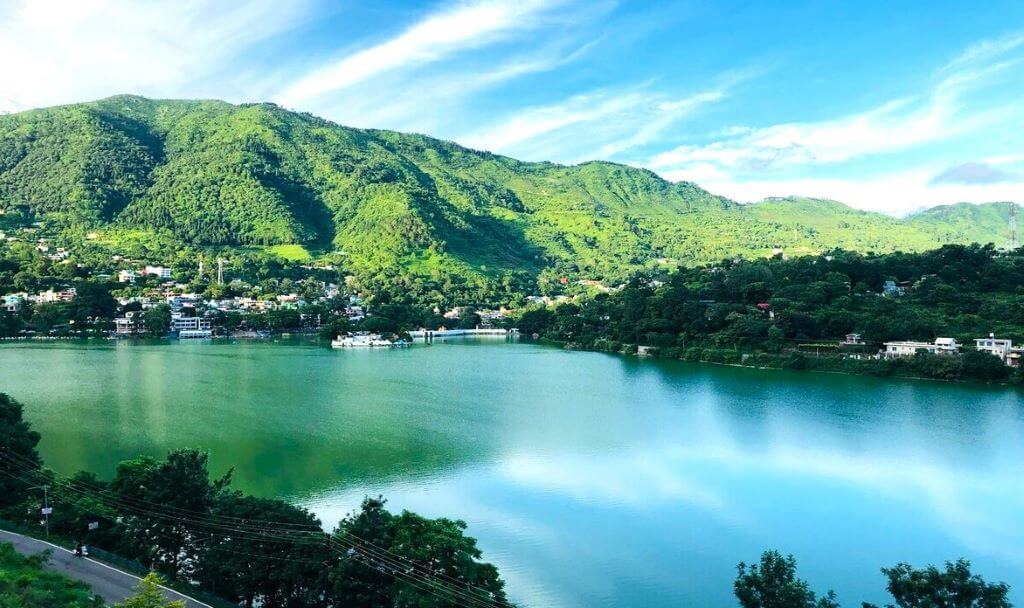In a proud moment for India, UNESCO has added the Maratha Military Landscapes to its World Heritage List in 2025. This recognition includes 12 historic Maratha forts, which showcase the military skill, smart planning, and lasting legacy of the Maratha Empire. Out of these forts, 11 are in Maharashtra and one is in Tamil Nadu. The UNESCO honor highlights the importance of the Maratha forts built between the 17th and 19th centuries.
These forts are not just strongholds of defense but also masterpieces of architecture that blend beautifully with nature. They reflect the vision and leadership of Chhatrapati Shivaji Maharaj and other Maratha rulers, who shaped a unique tradition of fort-building in India. As the world now recognizes their value, these forts continue to tell stories of bravery, strategy, and heritage.
Raigad Fort – The Capital of the Maratha Empire
Location: Mahad, Raigad district, Maharashtra
Built By: Chhatrapati Shivaji Maharaj in 1674
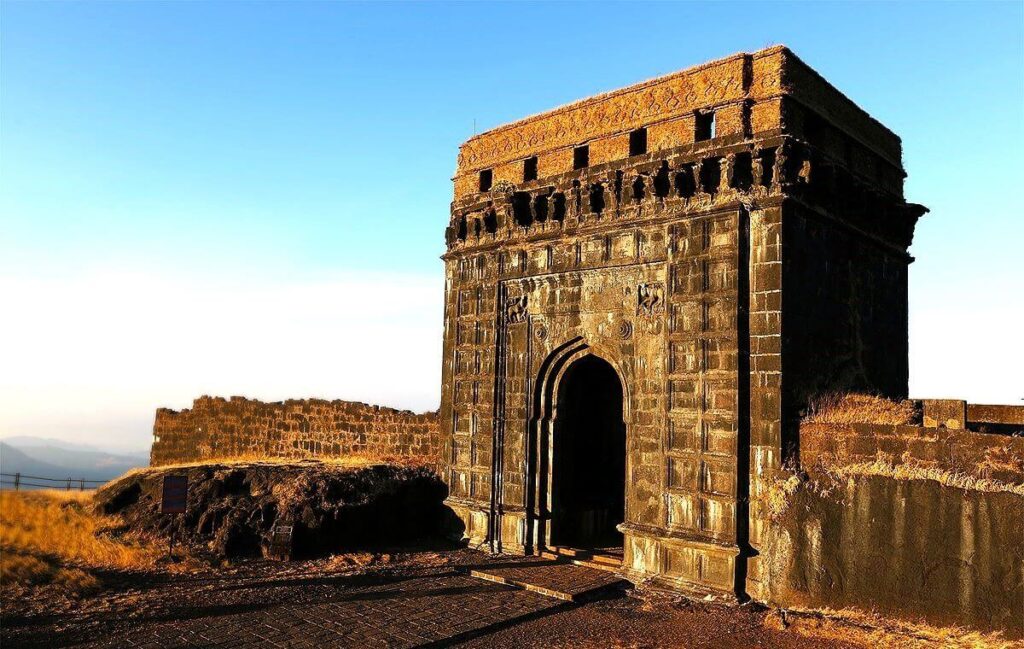
Raigad Fort, locally called Raigad Killa, holds a special place in Maratha history as the capital of Chhatrapati Shivaji Maharaj’s empire. After his coronation as the king of the Maratha Kingdom, Shivaji Maharaj chose Raigad as the heart of Hindavi Swaraj. Rising 820 meters above sea level in the Sahyadri Range, this mighty fortress was both a strategic military base and the site of his royal coronation. It remains one of the strongest fortresses on the Deccan Plateau.
The fort’s architecture features watchtowers, market areas, residential quarters, and the queen’s chambers, all safeguarded by advanced defense systems. Key highlights include the Jagadishwar Temple, Maha Darwaja, the Samadhi of Shivaji Maharaj, and the dramatic Takmak Tok—a cliff once used for executing enemies. Walking through Raigad today feels like stepping into the living history of the Maratha Empire.
Sinhagad Fort – The Lion’s Fort
Location: Pune district, Maharashtra
Famous For: Battle of Sinhagad (1670) and as a popular weekend destination from Pune
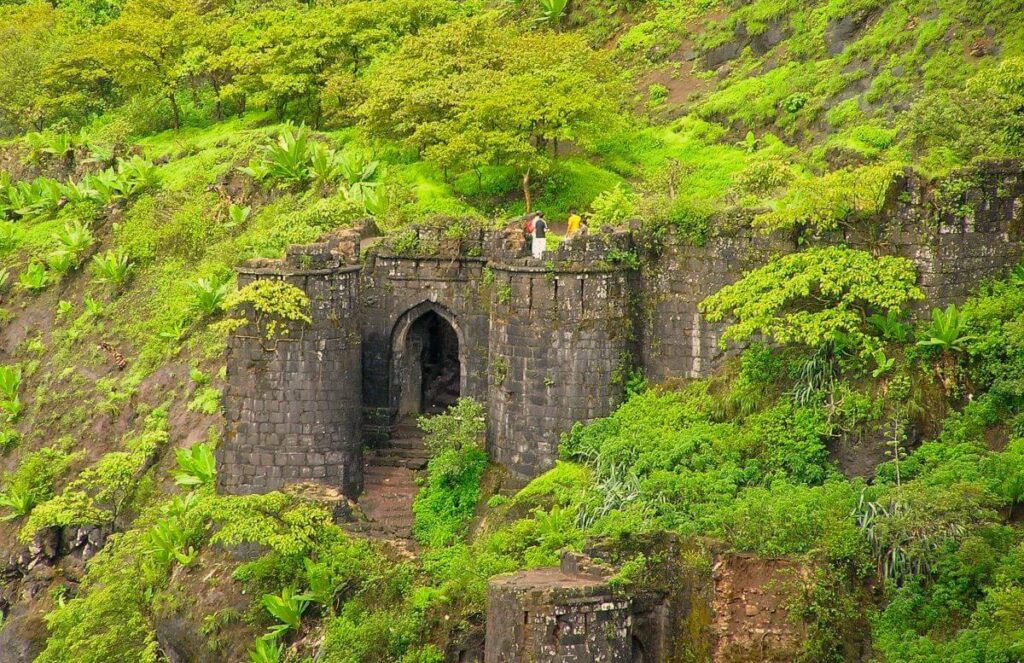
Sinhagad Fort is famous for the legendary Battle of Sinhagad (Kondhana) in 1670, where Tanaji Malusare, the brave military commander and companion of Shivaji Maharaj, sacrificed his life to recapture the fort from the Mughals. It was one of the first forts that Shivaji Maharaj reclaimed following the treaty of Purandar.
Perched 760 meters (2,490 ft) above ground, the fort’s steep slopes, narrow entrances, and dramatic topography made it a perfect strategic location for guerilla warfare, a tactic mastered by the Marathas. Today, Sinhagad Fort is a popular trekking spot near Pune. On clear days, visitors can enjoy panoramic views of other Maratha forts like Rajgad, Purandar, and Torna, making it a living testament to Maratha history.
Rajgad Fort – Shivaji’s Hill Capital Before Raigad
Location: Pune district, Maharashtra
Built On: Murumbadevi Dongar (hill) at 1,376 meters
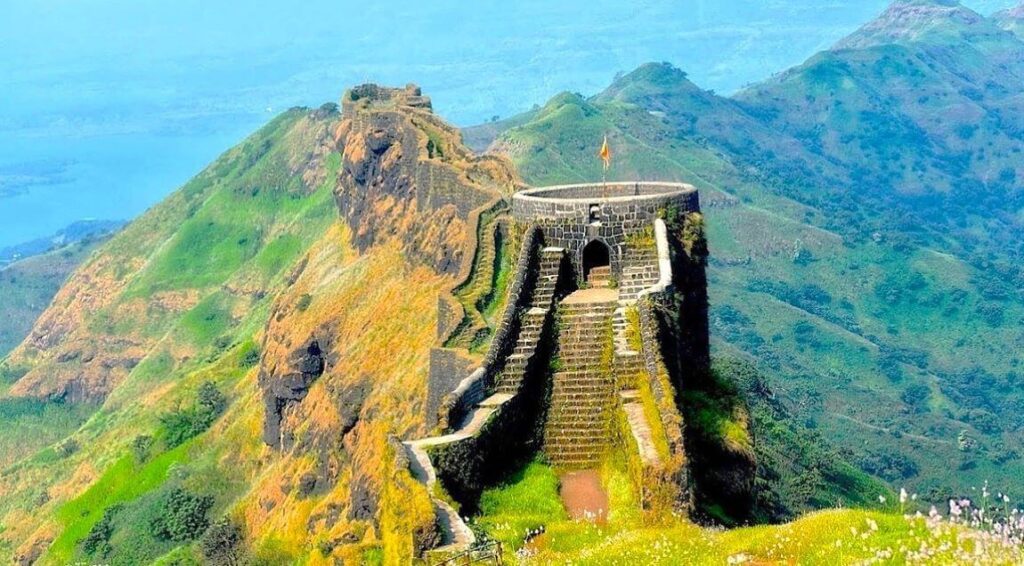
Rajgad Fort served as the first capital of the Maratha Empire under Chhatrapati Shivaji Maharaj for nearly 26 years. Sprawling over four ridges, its name—Royal Fort—truly reflects its architectural grandeur. The fort features strong bastions, palaces, water cisterns, and secret pathways, making it a remarkable example of Maratha military architecture.
Rajgad Fort also holds personal significance for Shivaji Maharaj: his wife Saibai passed away here, and his son Rajaram I was born here. A historic event of note is the burial of Afzal Khan’s head within the Mahadarwaja walls of Balle Killa.
Today, Rajgad Fort is a popular tourist destination near Pune, especially during the monsoon season. Its vastness often requires visitors to stay overnight to fully explore the fort. The Padmavati Temple inside can accommodate around 50 people, while several water tanks ensure a fresh water supply year-round. Local villagers at the foothills sell traditional items and antiques, adding a charming touch to the visit.
Torna Fort – The First Fort Captured by Shivaji
Location: Pune district, Maharashtra
Built By: Shiva Panth in the 13th century
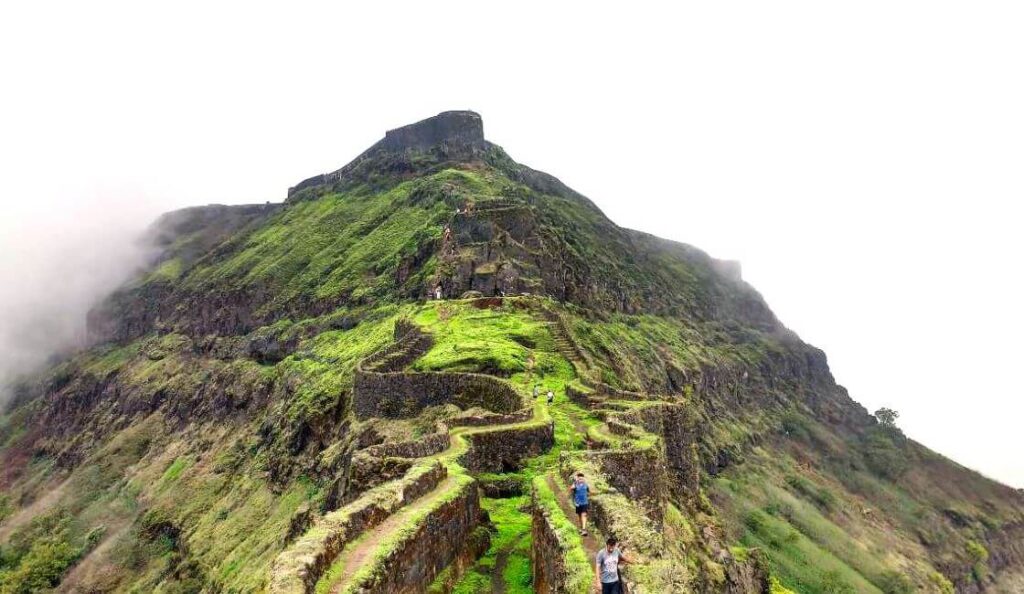
In 1646, a young Shivaji Maharaj, just 16 years old, captured Torna Fort, marking it as the first fort of the Maratha Empire. Earlier, the fort had been captured by Malik Ahmed, a Bahamani ruler, during the reign of Alauddin Khilji in the late 1470s.
Torna, meaning “pride”, lives up to its name with tall towers and a high elevation of 1,403 meters, making it one of the tallest forts in Maharashtra. After taking control, Shivaji discovered large quantities of gold buried within the fort, which were later used to build forts like Rajgad.
Also known as Prachandagad, the fort includes a citadel, granaries, temples, and water tanks, showcasing its strategic importance and ability to withstand sieges. Its historical and architectural significance earned it a place among the 12 Maratha forts recognized as UNESCO World Heritage Sites in 2025.
Lohagad Fort – The Iron Fort
Location: Near Lonavala, Maharashtra
Built By: Lohtamia dynasty in the 10th century CE
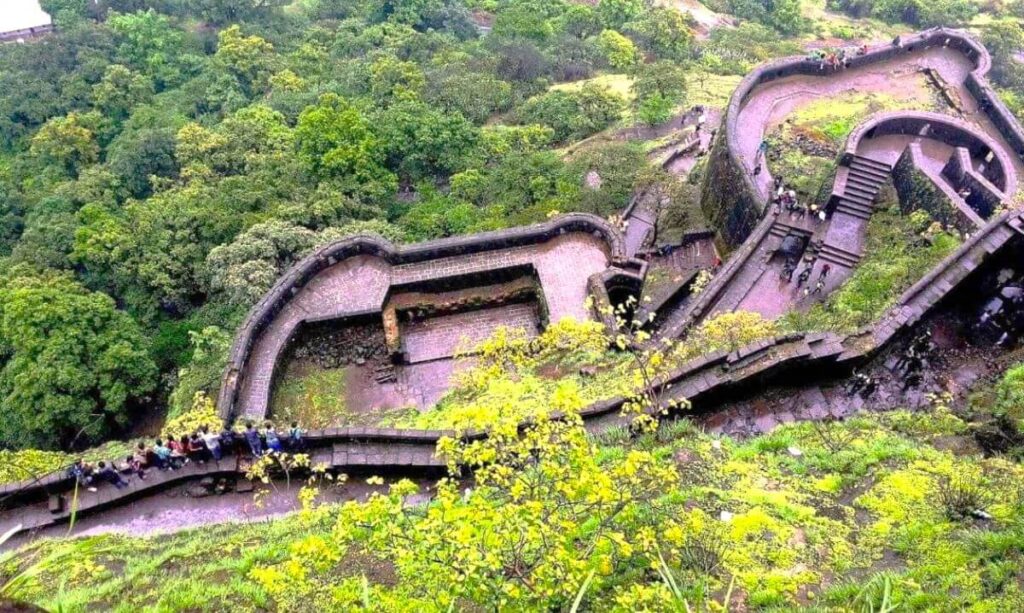
Lohagad Fort, meaning “Iron Fort”, truly lives up to its name as an almost impenetrable stronghold. Situated near Lonavala, the fort is connected to the nearby Visapur Fort.
Chhatrapati Shivaji Maharaj captured Lohagad Fort in 1648 CE, but had to surrender it to the Mughals in 1665 AD under the Treaty of Purandar. He recaptured it again in 1670 and used it as a treasury.
A unique feature of the fort is the Vinchukata (Scorpion), a long, tail-like fortification that adds to both its visual appeal and strategic importance. Lohagad remains a remarkable example of Maratha military architecture and resilience.
Pratapgad Fort – The Site of Shivaji–Afzal Khan Duel
Location: Near Mahabaleshwar, Satara district, Maharashtra
Built By: Shivaji Maharaj in 1656
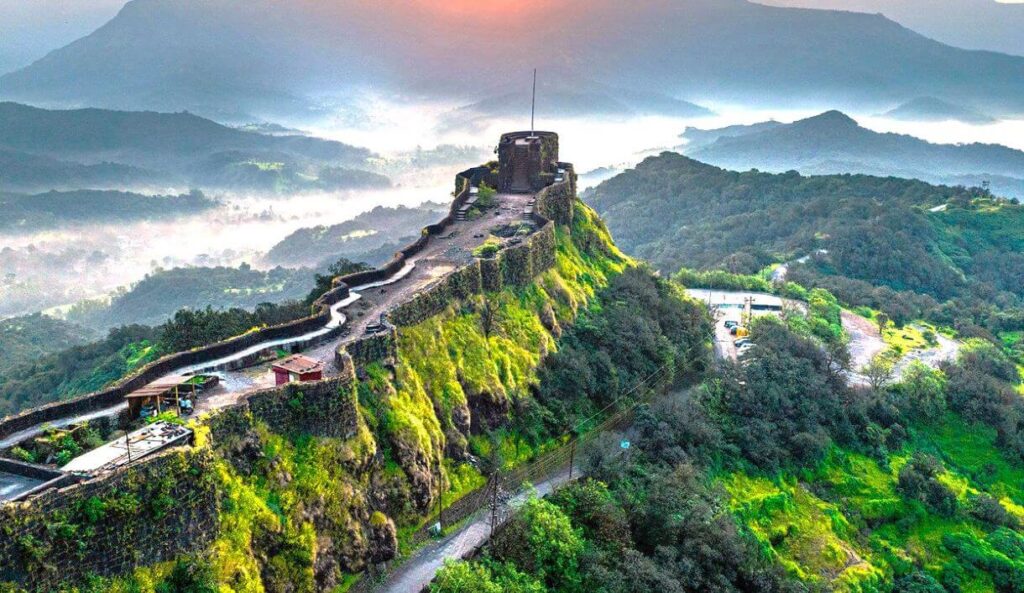
Pratapgad Fort is famous for the duel between Shivaji Maharaj and Afzal Khan, the general of the Bijapur Sultanate, in 1659. The fort features several watchtowers and bastions, designed to provide strategic military advantages during its time.
The fort holds great significance in Maratha history and is one of the few forts that still retains much of its original structure, including the Tulja Bhawani Temple. Its hilltop location offers breathtaking views of the surrounding region, reflecting both the military genius and vision of Shivaji Maharaj.
Sindhudurg Fort – The Sea Fort
Location: Malvan, Maharashtra
Built By: Shivaji Maharaj between 1664 and 1667
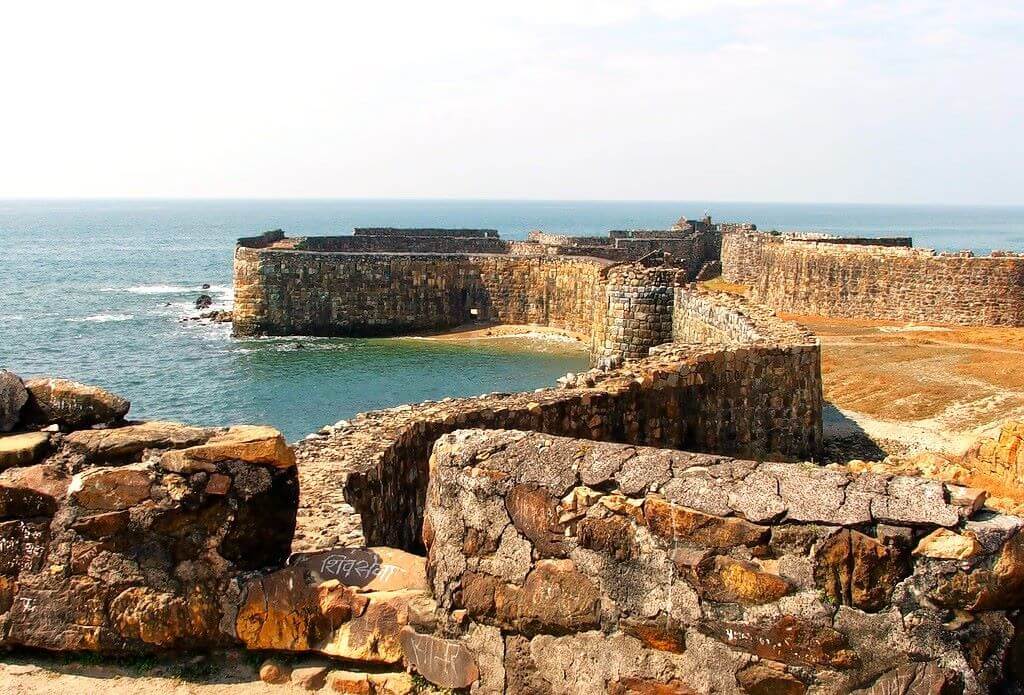
Sindhudurg Fort is unique among Maratha forts as a sea fort built on the islet of Khurte Island in the Arabian Sea. Constructed over three years with the help of thousands of workers, the fort was designed to counter the influence of English, Dutch, French, and Portuguese merchants and to curb the rise of the Siddhis of Janjira.
The fort’s design features a concealed main entrance, freshwater reservoirs, and several temples, including one dedicated to Shivaji Maharaj, a rare honor. Sindhudurg’s strategic and architectural brilliance makes it a key part of the 12 Maratha forts recognized by UNESCO in 2025.
Vijaydurg Fort – The Eastern Gibraltar
Location: Sindhudurg district, Maharashtra
Built By: Raja Bhoja II of the Shilahar dynasty (1193–1205) and later restructured by Chhatrapati Shivaji Maharaj
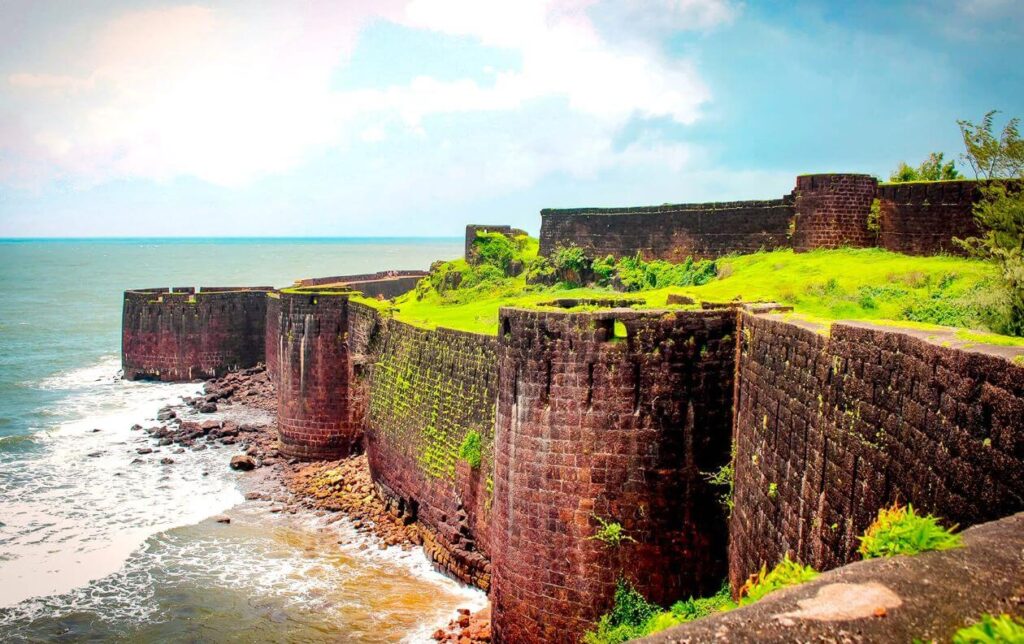
Vijaydurg Fort, located on the Konkan Coast, is one of the oldest forts in Maharashtra. Originally built by Raja Bhoja II in the 12th century and later fortified by Shivaji Maharaj, it served as a key naval base. A notable feature is the undersea wall designed to trap enemy ships, a testament to the Maratha naval engineering.
Dubbed the “Eastern Gibraltar” for its formidable defenses, the fort was considered nearly impregnable. Its strategic location near the 40-kilometre-long Waghotan (Kharepatan) Creek gave the Marathas a major advantage: the creek’s shallow waters prevented large enemy ships from entering, while Maratha warships could anchor safely hidden from view. Vijaydurg played a pivotal role in expanding Maratha presence along India’s western coastline.
Rajmachi Fort – The Twin Fortresses
Location: Near Lonavala, Maharashtra
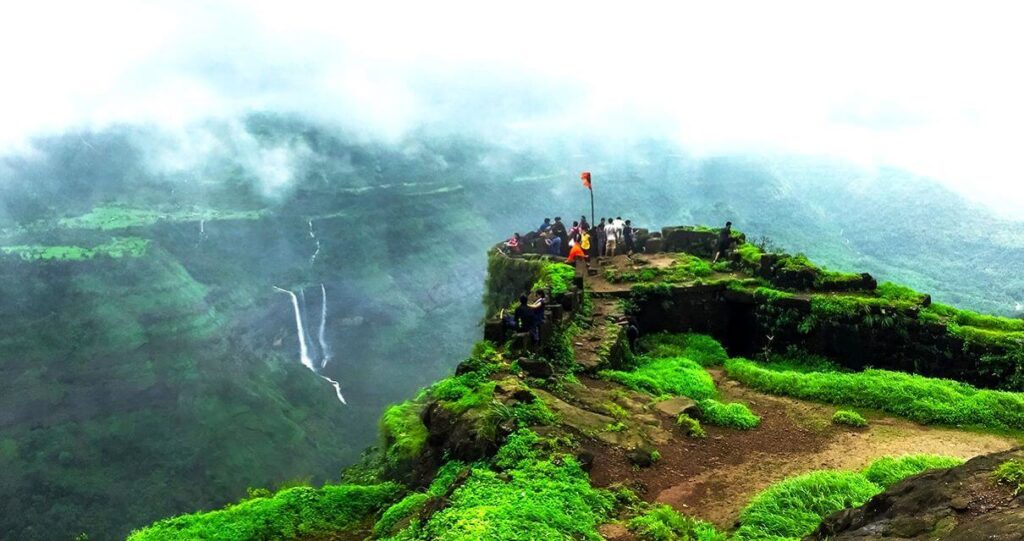
Rajmachi Fort, set against the Sahyadri mountains, is famous for its twin fortresses: Shriwardhan and Manaranjan, surrounded by a wide machi (plateau) with two Balekillas (watch towers). Although the fort pre-dates Shivaji Maharaj, it gained strategic importance during his rule, as it was further fortified to monitor the Bor Ghat trade route.
The fort is popular among trekkers and history enthusiasts, thanks to its lush greenery during the monsoon and historic caves. Its unique architecture and location make it an important part of the 12 Maratha forts recognized by UNESCO.
Khanderi Fort (Underi – Khanderi) – The Island Sentinel
Location: 20 km off the Coast of Mumbai, Maharashtra
Built By: Shivaji Maharaj in 1679
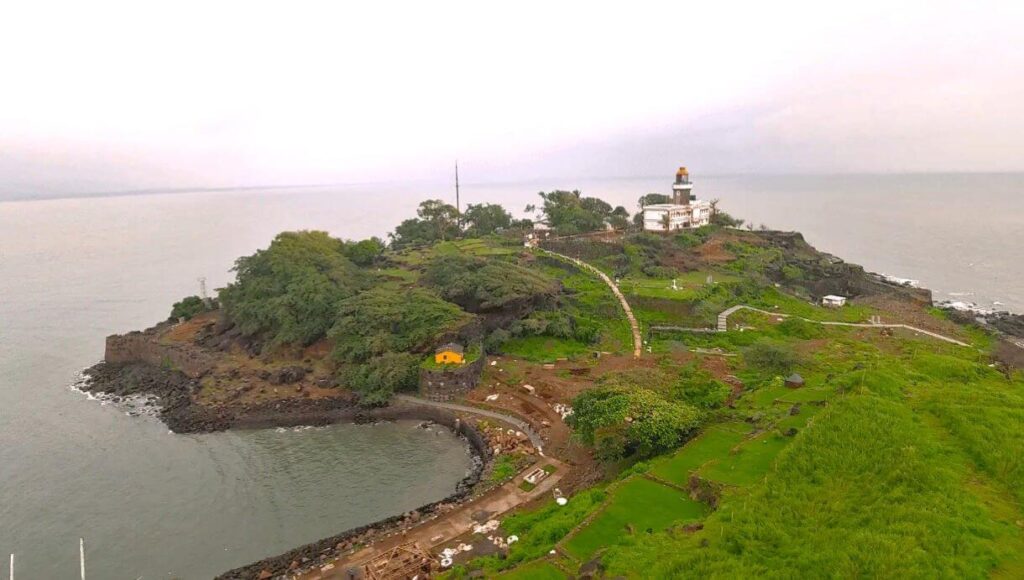
Khanderi Fort, located about 20 km off the coast of Mumbai, is a fortified island that, along with its twin fort Underi, played a key role in Maratha naval defense against the British and Portuguese forces. These island strongholds were equipped with lighthouses, cannons, and maritime surveillance systems, showcasing Shivaji Maharaj’s strategic naval vision.
The fort also houses the tomb of Daud Pir, a revered local saint, and features a musical stone that produces metallic tones when struck. A secret passage is believed to connect it to Kulaba Fort in Alibag. Today, Khanderi is accessible by boat, offering visitors a glimpse into the maritime strength and ingenuity of the Maratha Empire.
Suvarnadurg Fort – The Golden Fort
Location: Near Dapoli, Maharashtra
Built By: Adil Shahi dynasty and further fortified by Shivaji Maharaj in 1660

Suvarnadurg, meaning “Golden Fort”, served as a vital naval headquarters under Shivaji Maharaj and later the Angres, guarding trade routes and coastal security. Situated on a rocky island, the fort complex includes both land and sea fortifications and was equipped with advanced surveillance systems, reflecting the strategic genius of Maratha maritime defense.
It is believed that Kanakadurga Fort, along with mainland forts like Bankot, Fattehgarh, and Gova, formed a network of lookout posts to protect Suvarnadurg. Access to the fort is via the rocky island’s sandy shoreline, as it lacks a proper jetty. A narrow sea channel separates the mainland forts, enhancing natural defenses. Suvarnadurg is accessible only during low tide, making visits easier. Though partially in ruins, it stands as a vivid reminder of Maratha naval legacy.
Gingee Fort – Great Wall of South India
Location: Viluppuram district, Tamil Nadu
Originally Built By: Cholas, later captured by the Marathas in 1698
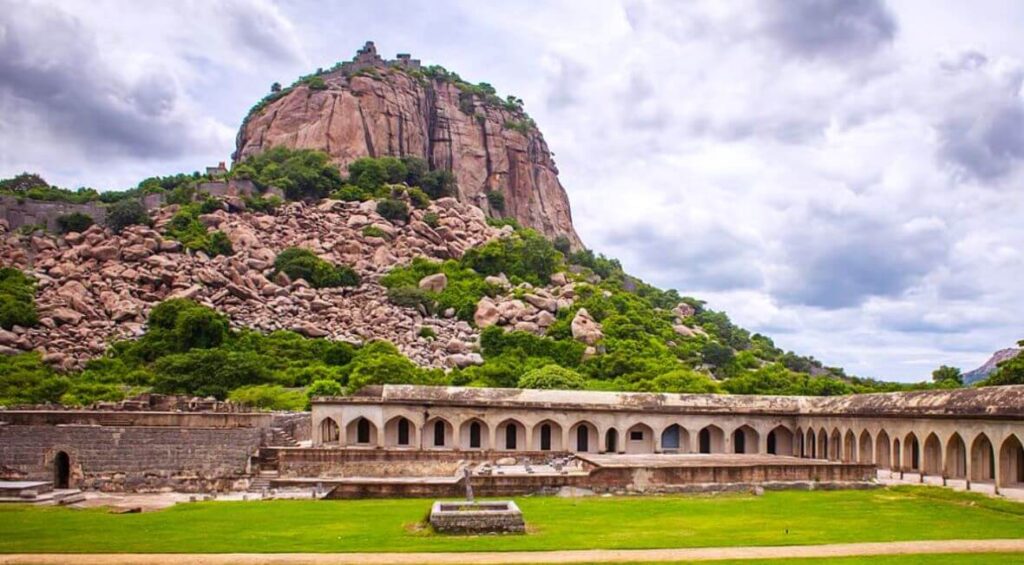
Gingee Fort is the only fort on this list outside Maharashtra. It was captured for Swarajya by Subedar Harji Rajemahadik for the Marathas under Shivaji Maharaj in 1677 AD. During Aurangzeb’s southward invasion, Gingee even served as a temporary Maratha capital. Set across three hillocks and often called the “Troy of the East”, the fort features enormous granaries, temples, and fortified citadels, reflecting the Marathas’ ability to adapt and fortify distant territories.
The UNESCO World Heritage designation recognizes the cultural, architectural, and historical significance of these forts. The Maratha Military Landscapes are celebrated for their:
- Innovative, location-specific military architecture
- Integration with natural terrain
- Strategic planning and use in guerrilla warfare
- Blend of utility, spiritual, and aesthetic design
- Enduring symbols of regional and national pride
These forts are living chronicles of the Maratha spirit and a strong reminder of India’s rich regional heritage. Preserving and promoting them ensures that the legacy of the Maratha forts will continue to inspire and endure.
Conclusion
These 12 Maratha forts are living chronicles of bravery, vision, and architectural mastery. From hilltops to seasides, they represent the strategic genius of the Maratha Empire and the rich heritage of India. Preserving them ensures that the Maratha legacy continues to inspire generations worldwide.




